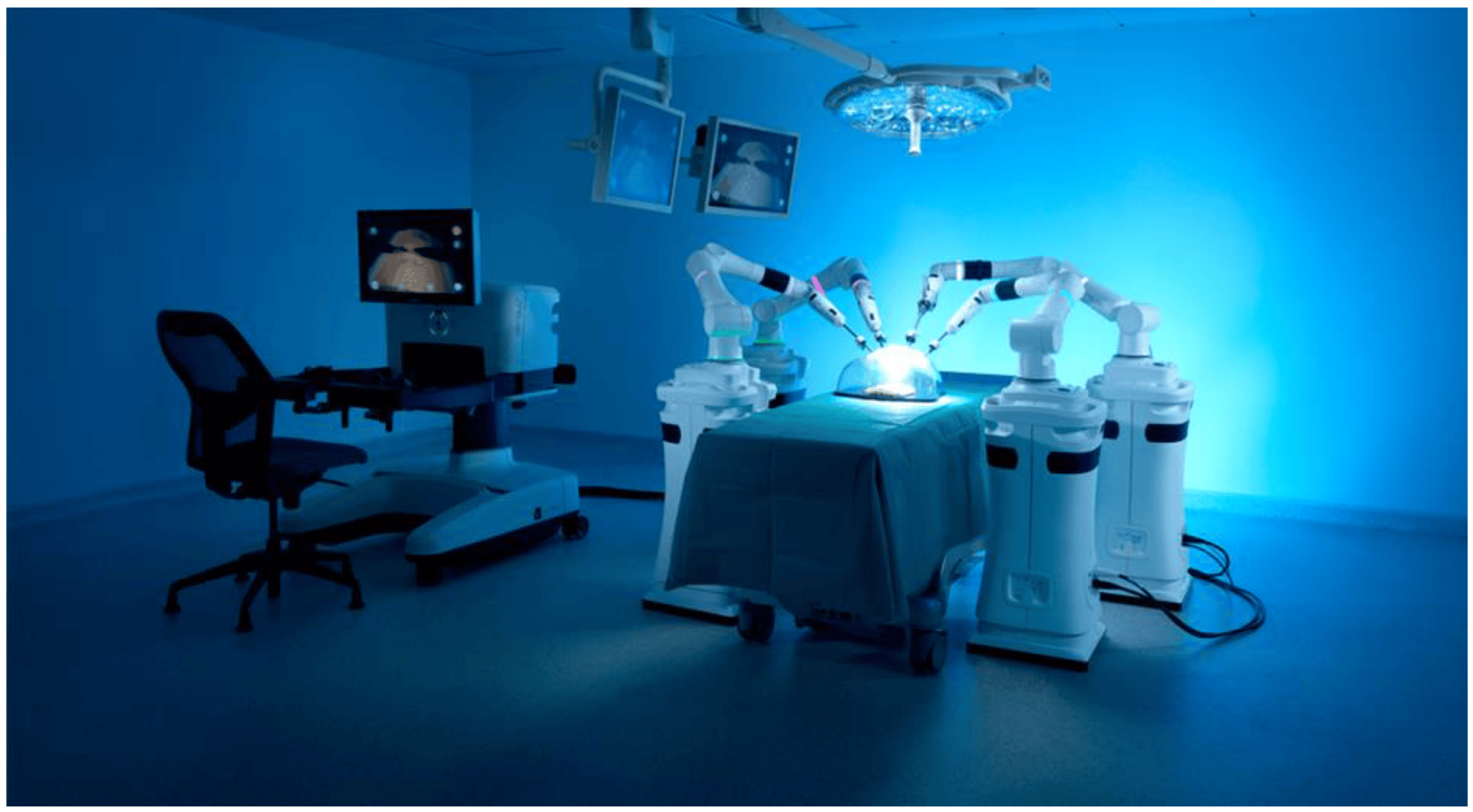Robotic Prostatectomy vs. Traditional Surgery: Unveiling the Key Differences and Benefits
Prostate cancer is the majorly diagnosed cancer among men, followed by skin cancer. It is further estimated that 1 in 6 males will face this issue by the time they turn 85. Men who are going through prostate cancer are expected to make tough decisions. One of the biggest choices is: What procedure should be chosen if they decide to have their prostate removed? Robotically assisted laparoscopy, in which a professional uses a robotic arm to do the surgery through smaller incisions, is beginning to replace traditional open surgery, in which a surgeon operates through a single lengthy skin incision.
In this extensive guide, we’ll examine the subtle differences of various surgical techniques, highlighting their main advantages and differences. Patients, healthcare experts, and researchers need to understand these distinctions to make informed decisions and achieve the best possible treatment results.
Understanding Robotic Prostatectomy
Robotic prostatectomy is a minimally invasive surgical process for curing prostate cancer. A robotic system is attached to tiny instruments that perform surgery on the prostate gland, which is known as a robotic prostatectomy. In place of using their hands to perform the surgery, surgeons use computers to control robotic arms, popularly via da Vinci Surgical System, to offer surgeons enhanced dexterity, visualisation, and control during the operation.
Here’s how it works:
- The surgeon sits at a console and instructs robotic arms equipped with miniature surgical instruments.
- A high-definition 3D camera shows magnified views of the surgical area, allowing for exceptional visualisation.
- The robotic arms replace the surgeon’s hand and wrist movements with improved precision and minimal tremor.
This technology facilitates the meticulous removal of the prostate gland while keeping the damage minimalistic to surrounding tissues and nerves.
Exploring Traditional Prostatectomy
Traditional prostatectomy procedure encompasses two main surgical methods for prostate cancer removal:
- Open Prostatectomy: This procedure involves a single, more extensive, openable section in the lower abdomen to access the prostate gland. The surgeon then removes the prostate and surrounding tissues visually.
- Laparoscopic Prostatectomy: This minimally invasive technique utilises multiple small incisions in the abdomen. Long, slender instruments and a laparoscope (a viewing instrument) are inserted through these openings to visualise and remove the prostate.
While laparoscopic surgery offers a less invasive alternative to open surgery, it still requires general anaesthesia and is expected to have a longer recovery time compared to robotic prostatectomy.
Key Differences Between Robotic and Traditional Prostatectomy
Now that we understand each method and its tactics let’s look into the key differences between robotic as well as traditional prostatectomy:
#1 Surgical Approach: Robotic prostatectomy is minimally invasive, utilising small openings and robotic aid. Traditional prostatectomy, in either open or laparoscopic form, involves larger incisions and requires the surgeon’s presence throughout the operation.
#2 Precision and Control: Robotic technology provides magnified 3D visualisation and improved capability, allowing for more precise movements and potentially reducing damage to surrounding nerves and tissues. Traditional surgery depends on the surgeon’s visual capacity and manual experience to complete complex procedures.
#3 Recovery Times: As robotic prostatectomy is a less invasive procedure, patients who choose for it generally experience shorter hospital stays and faster recovery periods. In addition to taking longer, recovery from traditional surgery—especially an open prostatectomy—also depends on the patient’s other medical issues.
#4 Complication Rates: As an expected outcome from patients and doctors, robotic prostatectomy is associated with lower rates of particular complications, like bleeding and infection, in comparison to traditional surgery. However, the overall risk appetite depends on multiple factors, including patient health conditions and surgical complexity.
Benefits of Robotic Prostatectomy Over Traditional Surgery
Comparing robotic prostate surgery to open or laparoscopic surgery reveals many benefits. Robotic surgical technology improves the surgeon’s manoeuvrability, control, and accuracy. This indicates a much less invasive procedure.
#1 Reduced Blood Loss: Robotic technology’s enhanced precision and control allow for meticulous dissection, minimising blood loss during surgery.
#2 Improved Outcomes: Studies suggest that robotic prostatectomy may lead to improved oncological outcomes (cancer eradication) and functional outcomes (urinary continence and erectile function) compared to traditional surgery. However, ongoing research is needed to solidify these findings.
#3 Other Benefits:
- Robotic technology lets the surgeon see the operating field from a live 3D view. With all-around vision, this hand-eye instrument alignment is comparable to open surgery. The technology allows for in-and-out zooming without the intrusive consequences of open surgery.
- The surgeon’s hands are projected with the image by the da Vinci’s display system, restoring optically accurate hand-eye synchronisation. Laparoscopy makes this more challenging because the camera is occasionally shifted to the plane of dissection.
- The da Vinci system’s 11-mm telescope consists of two 5-mm optical channels—one for each eye—that are connected by two different 3-chip-charged coupling devices in the camera head. The two images are presented to the surgeon in a 3-dimensional (3-D) stereoscopic manner, giving them depth perception that is not possible with a laparoscopy. A three-dimensional depth of view is not possible with the traditional laparoscopic method.
- By filtering hand tremors, giving magnification (10X or 15X), and offering scaling for the surgeon’s motions (1:3 scaling, which translates a 3-in movement of the master into a 1-in movement of the tool’s tip), the robotic systems boost precision.
- Contrary to laparoscopy, which only allows for 4° of freedom, the robotic instruments feature articulated tips that allow for 7° of freedom in movement (i.e., they replicate human wrist movements, including rotation).
Considerations for Patients and Healthcare Providers
Ultimately, the decision between robotic and traditional prostatectomy hinges on several factors:
#1 Patient Preferences: Some patients may prioritise a minimally invasive approach and faster recovery, while others may be more comfortable with traditional surgical techniques.
#2 Stage and Aggressiveness of Prostate Cancer: The stage and aggressiveness of the cancer can influence the suitability of each approach. Your urologist will discuss these factors and recommend the most appropriate treatment option.
#3 Surgeon Experience: Both robotic and traditional prostatectomy require experienced and skilled surgeons. Ensure your chosen surgeon has extensive experience with the specific approach you’re considering.
#4 Cost Considerations: Robotic prostatectomy typically costs more than traditional surgery. Insurance coverage for robotic surgery can vary, so you must check with your provider beforehand.
Final Words
The decision to choose between robotic and traditional prostatectomy requires in-depth consideration and consultation with healthcare providers. While both methods offer effective treatment options for prostate cancer, knowing their differences is important for personalised decision-making. It is recommended for patients and healthcare professionals to collectively discuss and engage in informed discussions regarding prostate cancer treatment options taking into personalised conditions. By embracing innovation and evidence-based practices, it helps us to identify that with robotic prostatectomy we can strive towards better results and improved quality of life for individuals facing prostate cancer.


